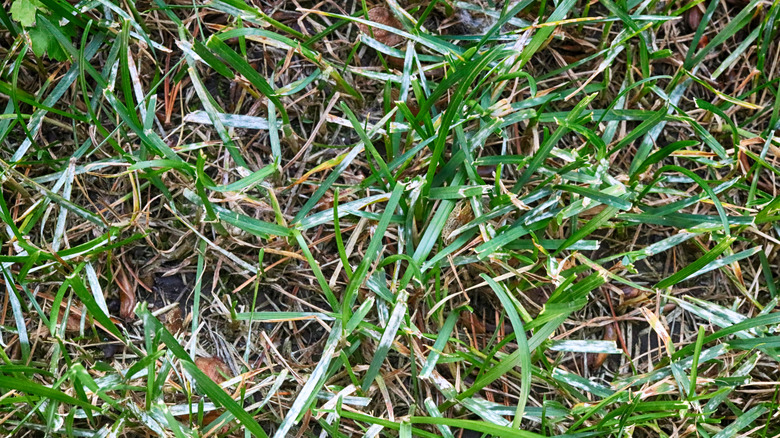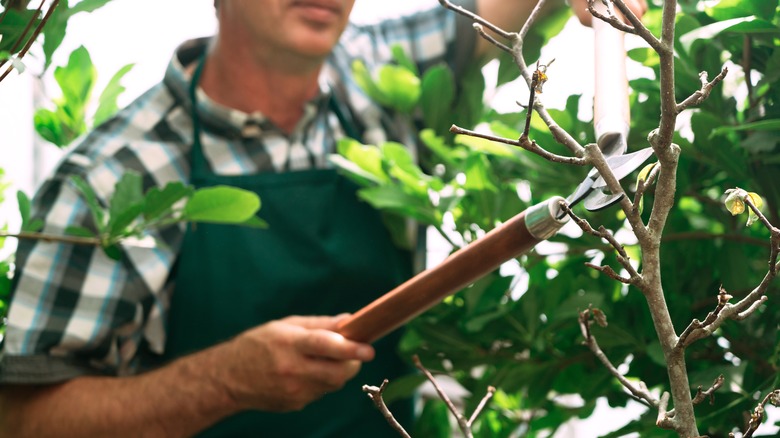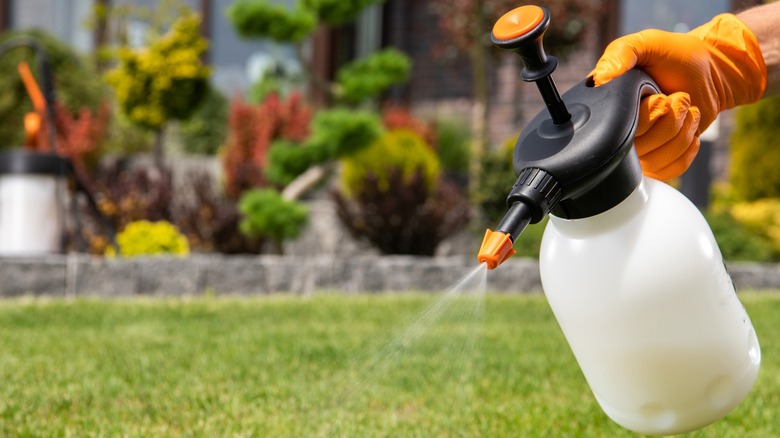Why Is Your Grass Turning White And How Can You Fix It?
If it appears that a light blanket of frost has descended upon your lawn, you may be wondering how that could happen when the temperatures are warm outside. The real culprit is a condition called powdery mildew, a fungus that causes small white spores to grow on grassy lawns and other types of plants. This disease tends to develop on parts of the lawn that are already facing unfavorable conditions, such as shady areas that don't receive enough sunlight or air circulation. In fact, the best way to prevent this fungus from appearing in your yard is to prune away the trees and shrubbery that may be preventing sections of your lawn from receiving the healthy conditions that are necessary to thrive.
Unsightly as it is, powdery mildew is not dangerous to children or pets, and it won't spread to other plants in your landscaping. A mild outbreak is not harmful enough to kill your grass. This disease is more of an indicator that certain parts of your yard are already in need of attention. If some areas of the lawn continue to lack enough sunlight or airflow, then the grass growing there could eventually turn yellow or die. Before it gets to that point, here are some solutions to consider if you start to notice powdery mildew in your yard.
Creating a healthy environment
The types of grass that are susceptible to powdery mildew include Kentucky bluegrass, Bermuda grass, ryegrass, and fine fescue. The disease will often start to appear where these grasses grow in shaded areas. While moisture is not the primary cause of this disease, the mild temperatures and high humidity that accompany cloudy days can encourage the growth and spread of this fungus. A lawn that is already struggling with a lack of sunlight and aeration will suffer during long periods of cloudy weather. For this reason, improving the conditions to maintain a healthy lawn is the best defense against powdery mildew.
The first step you can take to eradicate this disease is to trim away any excess growth that is blocking sunlight from reaching your lawn. Grass loves sunshine, and this step will also improve the air circulation around the affected parts of the lawn. Remove other obstructions, such as lawn furniture or children's toys, that can also block sunlight and proper airflow. When watering the grass in a shaded area, it's better to do so in the morning rather than at night. This timing is best so that the turf has a chance to absorb the moisture immediately and not allow water to accumulate overnight and interfere with air circulation. Another step you can take is to set your lawnmower at a high level when you mow the lawn in shady areas so that you're not stressing the grass by cutting it too short.
Following a maintenance plan
Continue to apply fertilizer to your lawn, but use less in shady areas because there's not as much need for nitrogen there. Too much fertilizer can encourage the growth of powdery mildew. It's possible to use certain fungicides to help treat the disease, including DMI treatments such as triadimefon and triticonazole. If you choose to use a fungicide treatment, be sure to speak with a professional at your local gardening center to see which one is right for your situation. However, keep in mind that treating your lawn with a fungicide will only temporarily solve the problem, and the powdery mildew will begin to grow again if the environment around the affected area doesn't improve.
If you've started to realize that it's impractical to provide enough sunlight to every section of your yard, you might consider planting shade-resistant grass in those areas. After you've treated any existing outbreaks of the powdery mildew, your next step could be to overseed the area with a mixture of shade-tolerant grass, such as tall fescue or perennial ryegrass. Some varieties require seeding the area every year. However, it's this type of maintenance plan, combined with the suggestions above, that can cultivate the healthy, green lawn that you long to admire every time you step outside.


